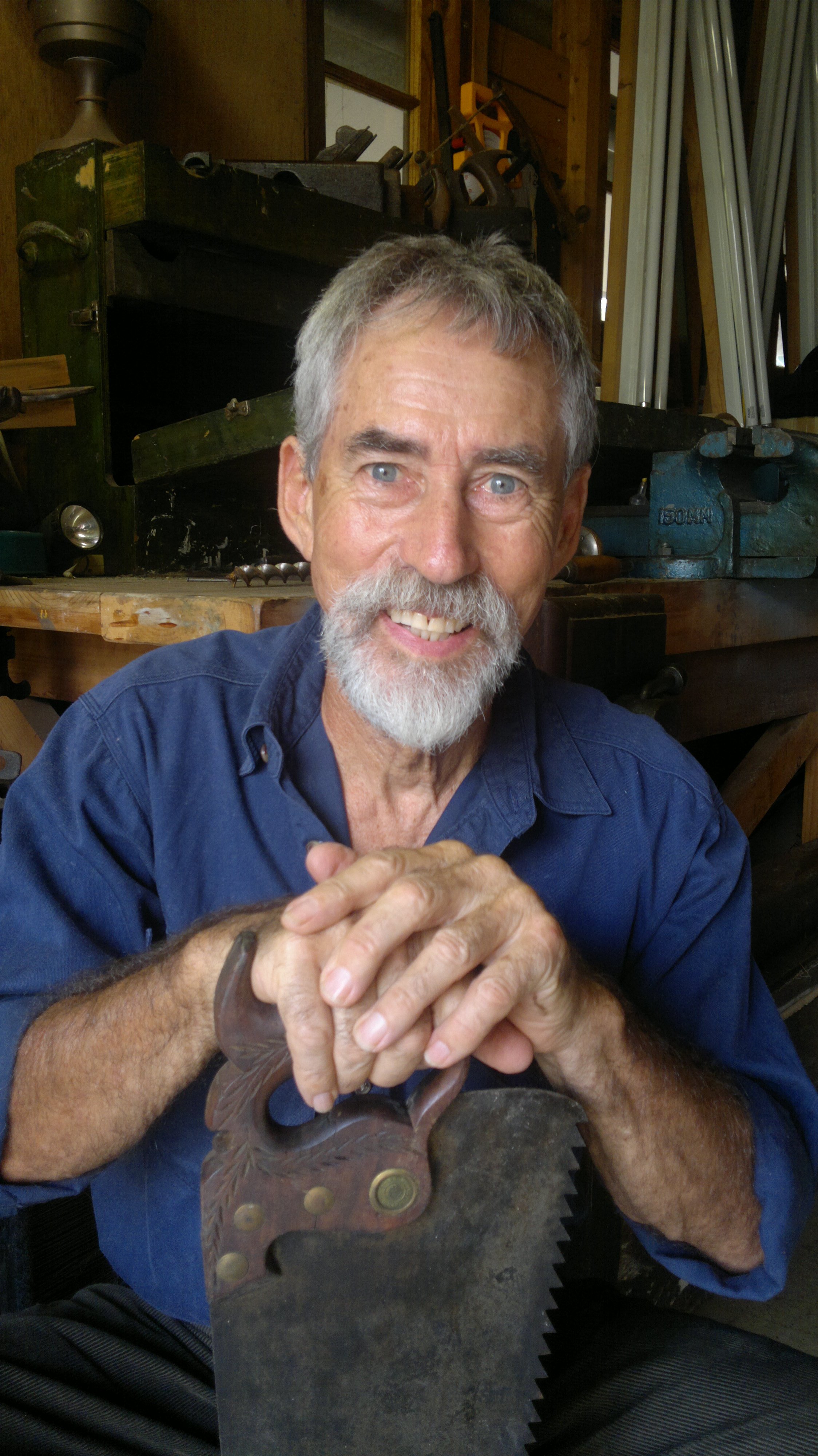ROLLO SHERWILL
Carpentry, joinery, cabinet-making and building workshop, Guernsey, Channel Islands.
I was, still am, a potterer. On the beautiful island of Guernsey, fifty-odd years ago, I pottered at cafes and restaurants, and bar-tending (see blog). My pottering had produced a very small excess of funds with which I bought a very small, old carvel fishing boat, with a very small motor, the sort you see in little hire putputs.
In my ignorance I took this little craft and built a little cabin on it, with dreams of a bunk, and a stove, and a mast and sails. Crazy, but I was a kid, and I wanted to sail, and put down crab pots, and fish with spinners for mackerel.
The jobs were completed; the boat looked so cute with its gaff-rig and jib, and staysail. Innocently, I put down my ten home-made crab pots in the waters around St Peter Port, with marked floats, all secure. The next day all had vanished; cut, or stolen, by real fishermen. But that’s another story, in which I must welcome a treasured friend, Vic Sanderson. In fact, there are dozens of Guernsey stories, encompassing the entire island, from surfing at Vazon, gardening at a French name I forget, a new baby at Les Canichers, a band at Jerbourg, a wreck of copra, me a tour guide of no skill, alcoholic spirits in tea-pots, a Citroen light 15, the awful seizing of two new marine engines, beach parties, a bakery odyssey, The Hairy Mouse; in fact a life of concentrated events., each one of which would run for pages, opening cans of worms on the way.
Back to the plot; one day I was there on the careening-hard, working on my nautical mission, with tools and marine-ply arranged around the tiny craft (named Tea-pot, by the way), when I was approached by a handsome, slightly older stranger. He introduced himself to the semi-naked hippy (always ready for a swim) as Rollo, and politely inquired as to whether I was a carpenter.
A trade! I wish! I was a practical baby, and loved making things; then there was Art School, (but that’s another story, totally). But a trade! A means of employment! I had to admit to Rollo, no, no carpenter. But he persisted: you look like you know what you’re doing……(the tools were lying around).
Would you like a job? He said; well, actually, yes, I would: things had ground to a stop, forcibly ejected, I was, from a most successful cafe I was running whilst the owner was overseas. He claimed his territory back and immediately went broke. Ha! Rollo thought I could handle the job he was working on,so……
It was the conversion of a tunnel, excavated by the invading German army, into an aquarium. Yes…….not a venture that I would have deemed either viable or lucrative, but Work, Employment. I started the next day, keen and capable.
Rollo Sherwill was the most kind of bosses, a mine of knowledge in the trade into which I had been gratefully inducted. His workshop was the most delightful environment, his staff all supportive gentlemen, his work most varied and interesting, and sometimes curious, and esoteric. There was no job of either delicacy, or complexity, or scale, which he wouldn’t tackle. The learning experience for me was the most valuable asset, treasured for the rest of my life.
I was, unfortunately, too young to be aware and suitably grateful for my invaluable experience with Rollo. I should have stayed; possibly have become a fixture in his enterprise, possibly to have achieved residency status on that island paradise, a good job, and maybe good pay later, and and maybe respect. Without doubt, for the rest of my life I owe my small skill to the trust and patience of Rollo Sherwill.
But I met and drank with two Liverpool blokes, who were horrified at my tiny wages, with wife and two children now to support. There was a project on a huge building site, for which they were looking for a cabinet-maker. I applied: it was a doddle, compared with our exacting standards, and got the job. The Scouse lads said I would earn twice as much.
Telling Rollo was awful. I felt, and was, a complete ungrateful prick. He offered to double my wages, but it was too late. I know I should have stayed, but the decision was made. I offered to stay as long as was necessary to finish the work I was on, and while he found a replacement, but it was over. And I both regret and understand my decision today.
Briefly, my new job was a price on making small bedroom drawer units for almost a hundred new units. I was given a unit as workshop, and I supplied a materials list, which was enormous (eight drawers per bedroom, two bedrooms per unit, 100 units). I needed two extra units for storage.
Having experience of mass-production, I set to work cutting every individual part from my huge stock, a job that took weeks, with no pay: the lads were horrified. But once the assembly started the little drawer-units came together at twenty a day, and accelerating, and were carried out of my workshop to be fitted.
My final pay was enormous, beyond all expectation, and salved my conscience slightly with regard to Rollo. But it is to him that I owe my skill at the trade, if I have any, and it is to him that I dedicated my book ‘The Building of the Queensland House’.
And without Rollo’s support we lost our residency status on the island of Guernsey, being just a few months short of the cut-off period of five years. Perhaps we had a case, but we were too young to know. Paradise lost, back to bleak England, then to bright Australia, carrying Rollo’s wonderful tuition with me.
Thanks, Rollo Sherwill, for starting a young idiot on the way to a lifetime of skill, a career, and solvency. (So far……)







